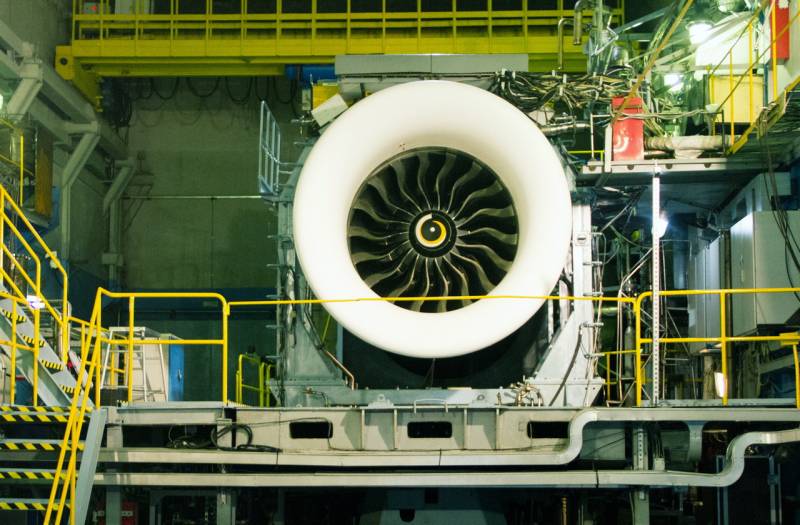Air Data News: With its 3-meter fan PD-35 will far surpass the Soviet D-18T
The Russian LLC "UEC-Aviadvigatel" is testing the PD-35, the largest aircraft engine in Russian history, with a fan of 3 meters in diameter. In the future, it is planned to equip such an engine with a promising wide-body long-range aircraft CR929, developed in partnership with the Chinese company COMAC.
According to the Air Data News resource, the motor will provide about 35 tons of thrust. The new turbojet engine is based on PD-14 - a new generation turbojet two-circuit twin-shaft engine, which is being tested on a medium-range narrow-body passenger aircraft MS-21-310 of the Irkut company.
The PD-35 program was launched in 2016 with the aim of creating an engine for a number of aircraft, such as the Il-96, Il-76 and even the An-124.
Experts believe that with its 3-meter fan, the PD-35 will far surpass the Soviet D-18T - the turbofan engine of the 80s used in the four-engine Ruslans. This statement can hardly be questioned. Not only will the new aircraft engine be 1,5 times more powerful, it will be significantly more economical and easier to maintain.
The development of the PD-35 engine for a wide-body aircraft has passed an important stage. The work was carried out for a year and a half, and now the demonstrator is being tested and functions stably
- noted the Deputy Director of Rostec Vladimir Artyakov (quoted by Air Data News).
The company does not specify a deadline for putting the new engine into operation, but the first test turbojet engine is expected to take off in 2023.

Information